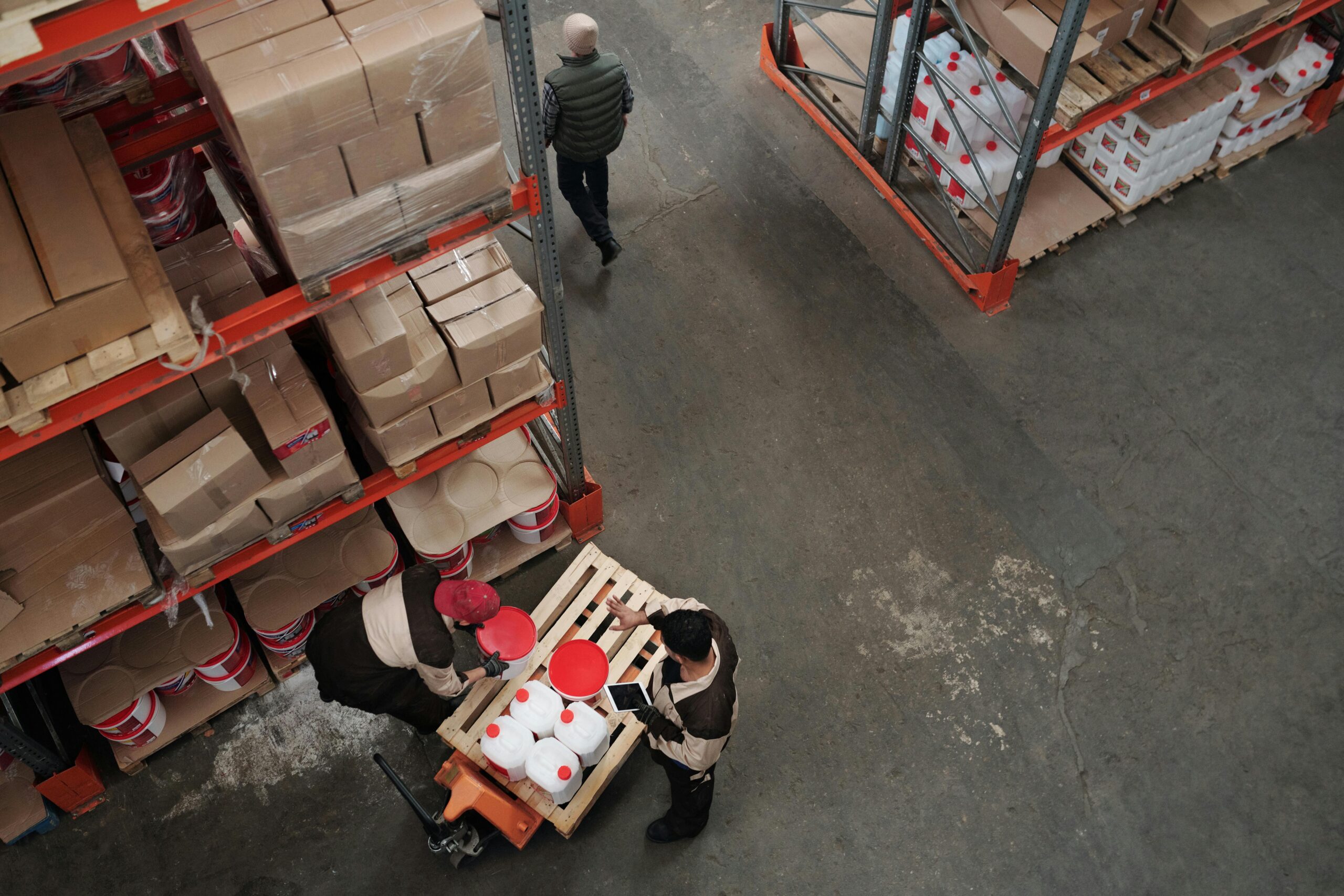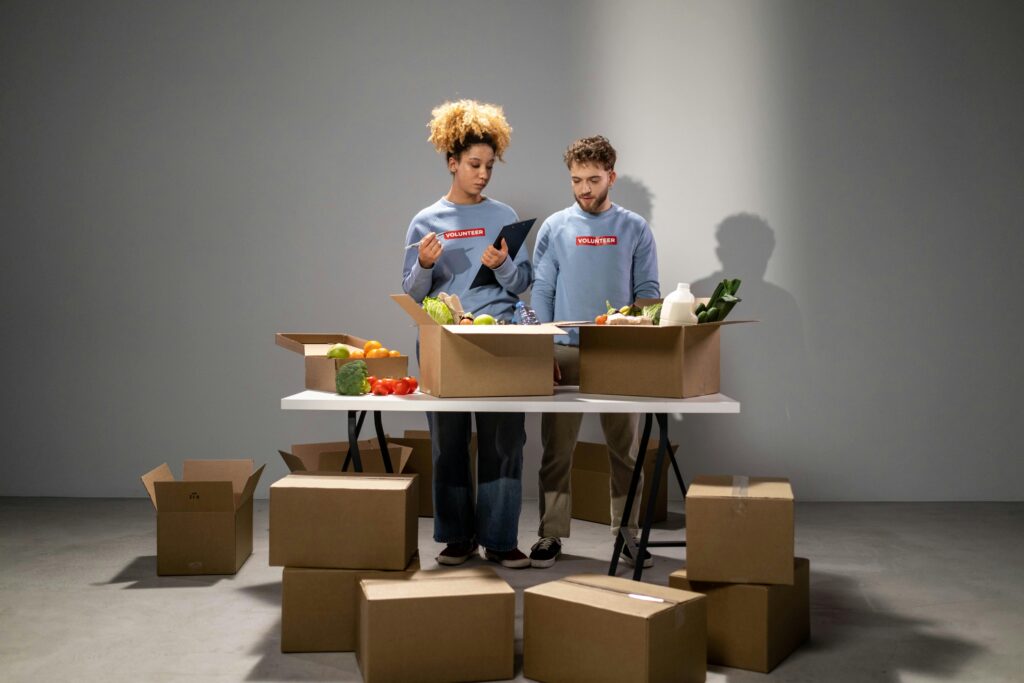Phone:
(647)382-0164
Physical address:
Brampton Ontario.

When it comes to transporting or sending delicate things, like glassware or electronics, making sure they reach their destination in one piece is crucial. Ever received a package with broken items and wondered how it happened? That’s where the right packaging materials come in!
In this blog, we will talk about the packaging materials and discover the best ones to keep your fragile items safe during their transportation and journey from source to destination.
We will also break down the key things to consider and provide easy-to-follow tips so you can send your delicate treasures without worrying about them getting damaged.
So, let’s dive into the art of protecting your fragile items through the right packaging choices!
Fragile items break easily and quickly. For example, glass, porcelain, or sensitive electronics are fragile items (or fragile in their nature). Some more examples are an antique vase or your new smartphone – these items need extra care when you’re packing them.
Understanding fragile items requires a delicate balance of their unique qualities and an awareness of the care they demand.
Fragility includes vulnerability, a characteristic that differentiates fragile items from their sturdier and tougher counterparts. Whether it’s a delicate porcelain figurine, glass pottery, or a vintage vinyl record, fragile items carry a sense of history, craftsmanship, and often sentimental value.
What makes fragile items special is not just their physical nature of fragility but also the emotions and memories they carry. They often serve as tangible reminders of valuable moments in our lives.
They also represent cultural heritage passed down through generations.
Fragility adds a layer of complexity to handling and preservation. It requires special efforts, caution, and mindfulness in care. Due to their delicate nature, fragility also challenges packaging and transportation. Moreover, each fragile item tells a story, not just of its creation but of the hands it has passed through and the moments it has witnessed.
For these reasons, understanding fragile items and their nature of handling, care, packaging, and transportation requires special attention, handling techniques, packaging material, and the right approach to transportation.
When it comes to packing delicate things, it’s not just about putting them in a box. We need to think about a few important aspects to ensure our fragile items stay safe.
First, we consider how heavy and oversized the items are because this helps us choose the right packaging materials.
Next, we look at the shape and structure of our fragile items.
Some things are more fragile in certain spots, and we want to protect those parts the most.
Finally, we consider how delicate each item is compared to others. These little yet crucial factors help us decide which materials provide the best protection.
Let’s explore the diverse world of packaging materials, where each material comes with its unique qualities to help you safeguard your delicate treasures.
Bubble Wrap: This soft and flexible material acts like a protective cloud, enveloping your items in a cocoon of air-filled bubbles.
It is fantastic at absorbing shocks and impacts, making it suitable for fragile items with smooth surfaces, such as glassware and ceramics.
Packing Peanuts: It helps create a resilient cushion that absorbs shocks and prevents movement within the packaging.
Their versatility makes them suitable for filling empty spaces in boxes, ensuring your items remain securely in place throughout their journey.
Foam Packaging: Like a tailor-made suit for your delicate items, foam packaging molds itself to the contours, providing a custom fit.
This material is beneficial for safeguarding odd-shaped objects that require extra care, special handling techniques, and attention during transportation.
Corrugated Boxes: Consider these as the reliable shields in the packaging material.
Corrugated boxes offer better and more robust protection, helping maintain your fragile items’ structural integrity. They come in various sizes and strengths to accommodate the needs of different sizes of items, ensuring a secure passage from sender to recipient.
Additionally, understanding the strengths and specialties of each material allows you to choose the perfect packaging material for your delicate items, ensuring a safe and secure journey to their final destination.
Now that we have discussed the packaging material let’s see how they help carry your delicate items.
Strength and Durability: Each material has its own level of toughness. Bubble wrap excels in absorbing shocks, packing peanuts create a sturdy cushion, foam securely cradles items, and corrugated boxes provide robust protection.
Consider your item’s delicacy and choose the strength accordingly.
Cost-Effectiveness: Budget matters. Even in the packaging world, one must also think about the budget. Bubble wrap and packing peanuts might be costlier, but they offer top-notch protection.
Foam can be a middle-ground option, while corrugated boxes are often budget-friendly.
Always balance your budget with the level of protection your items need.
Eco-Friendliness: Being an environmentally friendly material is also crucial. Corrugated boxes are often recyclable, making them one of the best eco-friendly choices.
Consider the environmental impact when making your selection.
Understanding the strengths and weaknesses of each packaging material helps you make an informed decision.
Whether it’s the shock-absorbing bubble wrap or the budget-friendly corrugated box, choose the material that aligns with your delicate item’s needs for a safe and secure journey.
Packing fragile items requires a delicate balance of care and attention in order to make sure they arrive intact and safe at their destination.
Whether you’re moving homes or shipping valuables, following these best practices can safeguard your delicate treasures.
Choose the Right Packing Materials: Start with sturdy boxes in various sizes, bubble wrap, packing peanuts, and packing tape. Opt for specialized boxes designed for fragile items if available.
Wrap Each Item Individually: Wrap fragile items like glassware, ceramics, or electronics separately in several layers of bubble wrap. Also, try to fill empty spaces in the box. For the same purpose, you can use packing peanuts or crumpled paper. These materials help prevent unwanted shifting during transit.
Label Boxes Clearly: Use “Fragile” stickers or markers to indicate boxes containing delicate items. This alerts movers or handlers to exercise extra caution.
Pack Heavier Items at the Bottom: Make sure you place heavier items at the bottom of the box and lighter on the top. It helps prevent crushing.
Consider Double Boxing: Double boxing provides an extra layer of protection for highly delicate items or those with sentimental value. Place the wrapped item in a smaller box, then pack that box within a larger one, filling the space with cushioning material.
Handle with Care: When transporting fragile boxes, lift them carefully and avoid dropping or tossing them.
By following these best practices, you can ensure your fragile items withstand the journey and arrive safely at their destination.

Now, let’s discuss the packaging material that not only protects your delicate items but also shows some love to the environment. These eco-friendly packaging options are the best option for nature and Mother Earth!
Sustainable Choices: Some packaging materials are like nature’s allies. Corrugated boxes, for example, are often made from recycled materials and can be recycled again. They’re the best option, leaving no trace behind and ensuring a cleaner planet.
Recyclable Materials: Recyclable packaging materials can be used repeatedly and multiple times before they are discarded. It’s like a never-ending cycle of protection for your items and the environment.
Biodegradable Options: Some materials naturally fade away after their mission. Biodegradable packaging materials break down over time, leaving behind no waste. It’s like having packaging material that completes their task and gracefully exits the scene.
By choosing these eco-friendly options, you’re protecting your delicate items and contributing to a greener and healthier world. Indeed, it’s a win-win for both – your items stay safe, and the environment remains clean and healthier for everyone.
Now, let’s discuss the innovation and new stuff in the packing world.
Fancy Technologies: Cool packaging technologies include air cushions and protective films. These add an extra layer of defense, ensuring your items are safe and sound.
Smart Designs: Packaging now comes in brilliant designs because of the latest design machines and materials. There are boxes with custom inserts that fit your items perfectly. It’s like giving your items extra protection.
Specialized Materials: Some materials are super strong yet lightweight. They help give your items top-notch protection without carrying extra weight. Such items are super-agile and efficient.
Here is the ultimate guide to help you keep your delicate items safe and sound. We discussed packaging material, learned their strengths, and explored the latest tech in the packing world.
Remember, the key to a successful journey for your delicate items is choosing the right packaging material— whether it’s the soft cloud of bubble wrap, the sturdy shield of corrugated boxes, or the high-tech gadgets of new-age materials.
By following these simple yet super-effective tips and tricks, you are not just packing your items but also ensuring your delicate and valuable item reaches its destination with love, care, and top-notch safety.